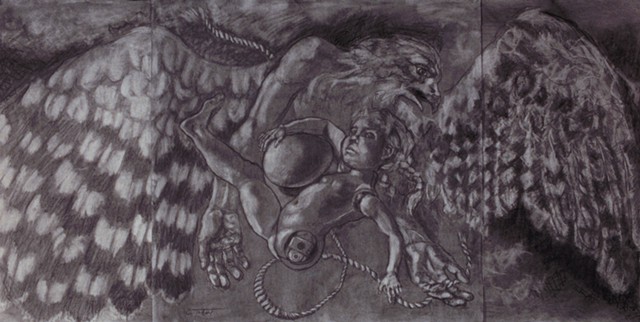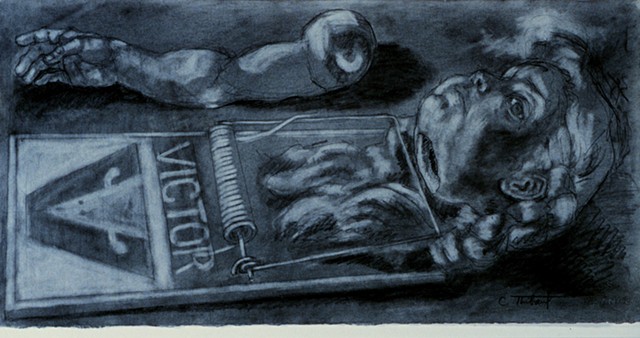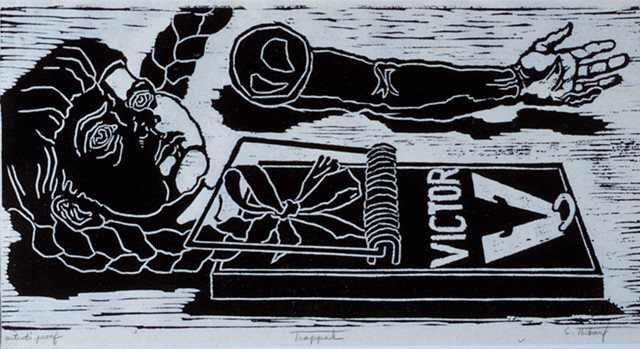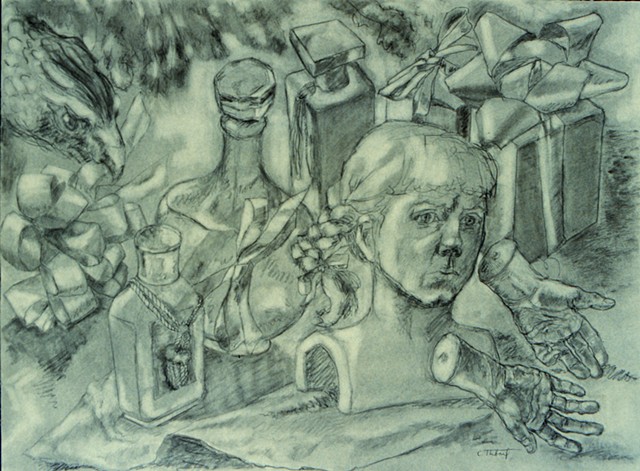Yonec
The Myth of Yonec and Other Still-Lifes
This exhibit is intended to be a surrealistic reinterpretation of an Old French lay, Yonec, a poem that has haunted me for years. Marie de France is the first poet known to have written down Yonec, which was based upon an ancient Celtic myth, in the late 12th century. She included it in a volume with 11 other lays; The Lays of Marie de France is considered a classic of medieval French literature.
In this poem, a young girl was given away in marriage to an evil man who kept her trapped in a castle tower. She wasted away in melancholy until a falcon/hawk flew through the narrow castle window and, metamorphosing into a man, rescued her from despair. The evil husband, perceiving that his bride had transformed into a joyous person, lay in wait outside the tower to capture and kill the cause of her happiness. Ultimately, he trapped the falcon/hawk as he had trapped the girl, and both lovers died, but not before the girl bore a child, Yonec, who lived on and met with his own destiny. The story does not end here, but I have attempted to interpret several stages of this legend with the help of surrealist metaphors.
Another source of inspiration for this exhibit was the work of the German surrealist artist Hans Bellmer (1902-1975), who, according to all accounts I am aware of, was the first to introduce the idea of the doll into surrealist iconography. The heroine of the Yonec story, as I tell it, is the broken doll whose misadventures I began to chronicle during the late 1990's. At first I was sure that the doll must stand for the condition of women, but since then I recognize that the doll represents more broadly the human condition. Now the doll represents to me a condition of alienation, a severance from the world of childhood with its lost hopes, illusions, and dreams. Critics have made interpretations such as these concerning the meaning of Bellmer's doll, including the notion that the doll represents the oppressed. I have mused and meditated upon psychoanalytic and Jungian interpretations of the surrealist metaphors such as the idea of entrapment. We are spirits trapped in our bodies (NeoPlatonic dualism), and in our modern lives we are all faced with entrapment of many kinds from within and from without. For me the doll symbolizes this ambiguous relationship of the heart and mind to the body and of both to the real world with its institutions. The hawk for me is a symbol of the transcendent freedom of the imagination from these constraints.
Learning about the procedure of monotype printmaking has also been a liberating experience, which has opened up a whole new dimension of experimental visual creation for me. It has been an exploratory journey fraught with serendipitous accidents and the continual discovery of delightful special effects. I have enjoyed juxtaposing traditional drawing with an untraditional use of media.
I owe a great debt of gratitude to all my teachers and to the whole MassArt community without which this work and the opportunity to exhibit it would never have been possible.



